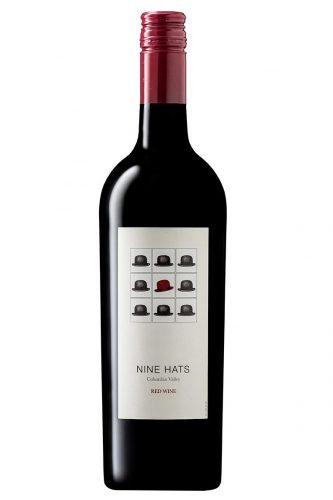
March is Wine Month in Washington (that state north of ours). Unless you have a passion for wine, that fact is not very important.
If you do suffer from such passion, additional facts come into play: One, they make some awfully good wines in Washington, especially Big Reds; two, Washington wineries support avid marketeers, given to making deals that will appear in your supermarkets in the form of endcaps and displays; three, wine writers (online and on paper) will receive (unrequested) free samples and will be chatting up the wines — as, ahem, here.
Washington is the second-largest producer of wine in the U.S., behind that state just south of us; in fact, Washington now might be third, passed by New York, making Oregon fourth. Washington is blessed by having the Columbia River’s valleys and hills, nearly perfect areas for growing grapes — lots of sun, enough water, well-drained soils.
We predict that decades from now (assuming the world continues pretty much as is), Washington wines, particularly its “star wine,” cabernet sauvignon, will be recognized as among the best — from anywhere.
For now, Washington doesn’t rank highly against Oregon’s “star wine,” pinot noir, considered by many wine-wags to be the pinnacle of vino. Washington wines are drinkable, arguments go, but they’re not the “best” (i.e., pinot noir), so whatever. But, as they say in Washington (D.C.), that’s just us being us.
Silly stuff, sure, but why waste time arguing about taste? Because that’s our business? Okay, so pinot noir is our favorite, too. Still, these Washington wines are undeniably good glug.
A box came, and in the box were four wines, all very tasty: Tall Sage 2015 Chardonnay ($10), smooth and crisp, flavors of apples and pears with tropical and floral notes, nice wine for some light foods; Nine Hats 2015 Red Wine ($20), charming blend, mainly syrah and cabernet sauvignon with some merlot and a dash of malbec, flavors of red and black fruits, sprinkling of pepper, competently balanced for food and finish; DeLille Cellars 2014 D2 ($45), super wine, Bordeaux-style blend, mainly merlot and cab, richly fragrant, deeply colored, flavors bursting with dark berries and chocolate, a natural match with roast beast; G3 2015 Cabernet Sauvignon ($15), fine expression of pure cab, estate-grown by a caring family with a superb vineyard, balanced, with long flavors (pure dark cherries) and still-stiff tannins that promise development with longer aging.
Yep, Washington winemakers are bottling some good juice from their fine vineyards, but some clever Oregon makers are also getting those warm-climate grapes and putting them to good use. Peter Rosback, owner and winemaker of the superb Sineann label, has proven that he’ll go a long way for grapes with the flavors he favors. For instance, he makes an annual excursion to New Zealand for juice that goes into Sineann 2014 Sauvignon Blanc ($18), terrific wine, loaded with fruit flavors.
Rosback drew from the Celilo vineyard in Washington to yield Sineann 2014 Gewurztraminer ($18), made in Alsatian (dry) style, acutely balanced, with citrus and mineral flavors. He also bought Washington grapes from the super-fine Mercer Ranch vineyard owned by Paul Champoux to produce Sineann 2014 Cabernet Sauvignon “Baby Poux” ($42), spendy, true, but worth every dime.
It’s also worth noting that Sineann wines make use of the new screw-caps that have the virtue of easy opening while mimicking cork tops that encourage aging in the bottle, very important for big cabernets like “Baby Poux,” which will develop finesse over time.
Owners, growers and winemakers in Washington’s 600-plus wineries have cause to celebrate: They’ve taken their industry into the stratosphere in a very brief time and are now making world-class wines from their dazzling valleys — and they’re still just beginning. Their biggest producers have also shown, in many cases, remarkable market sense, putting quaffable glug on supermarket shelves and endcaps, priced to compete with big producers’ wines from anywhere.
But let’s not forget that Oregon is a big state and has the climates and vineyards capable of yielding warm-climate wines — whites and reds — that can rival the best that Washington can bottle.
We’ll explore those potentials soon in future columns.